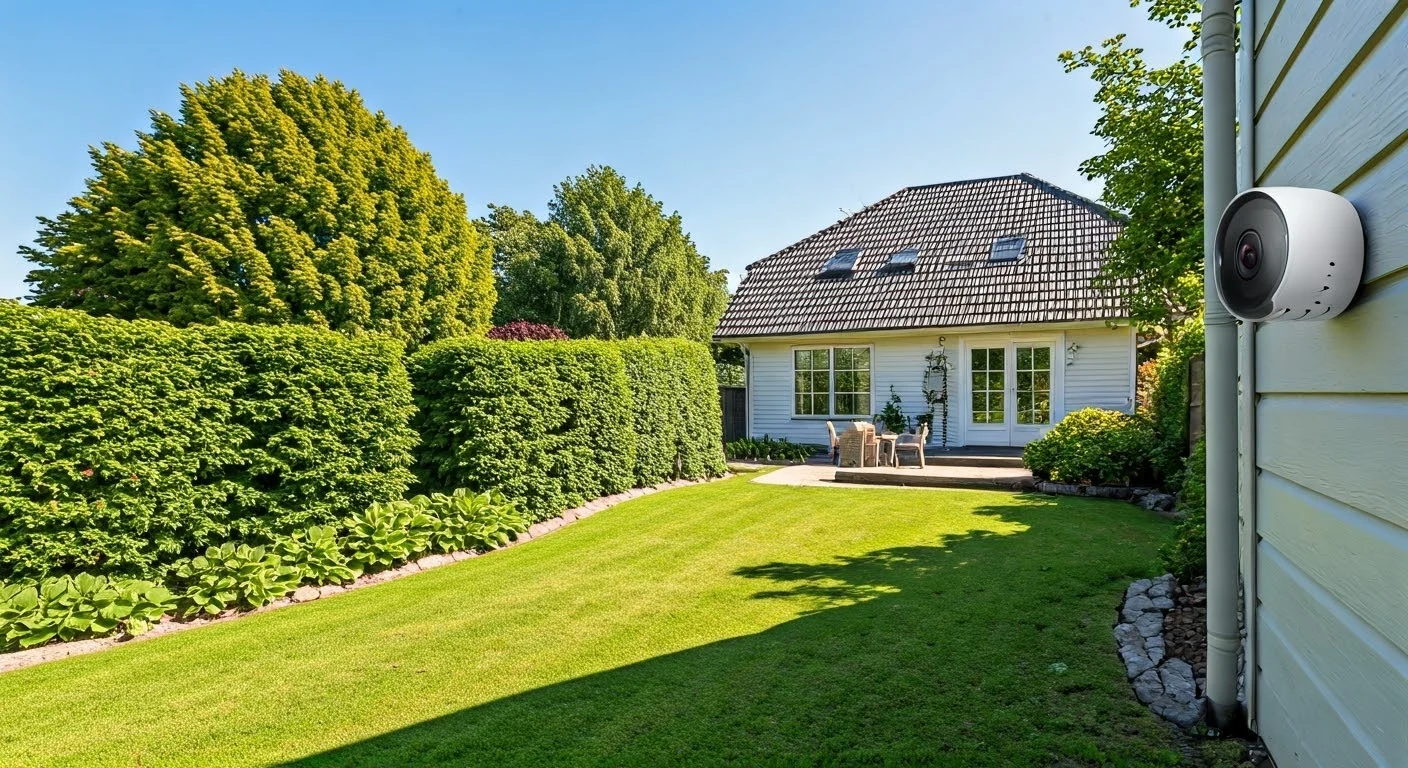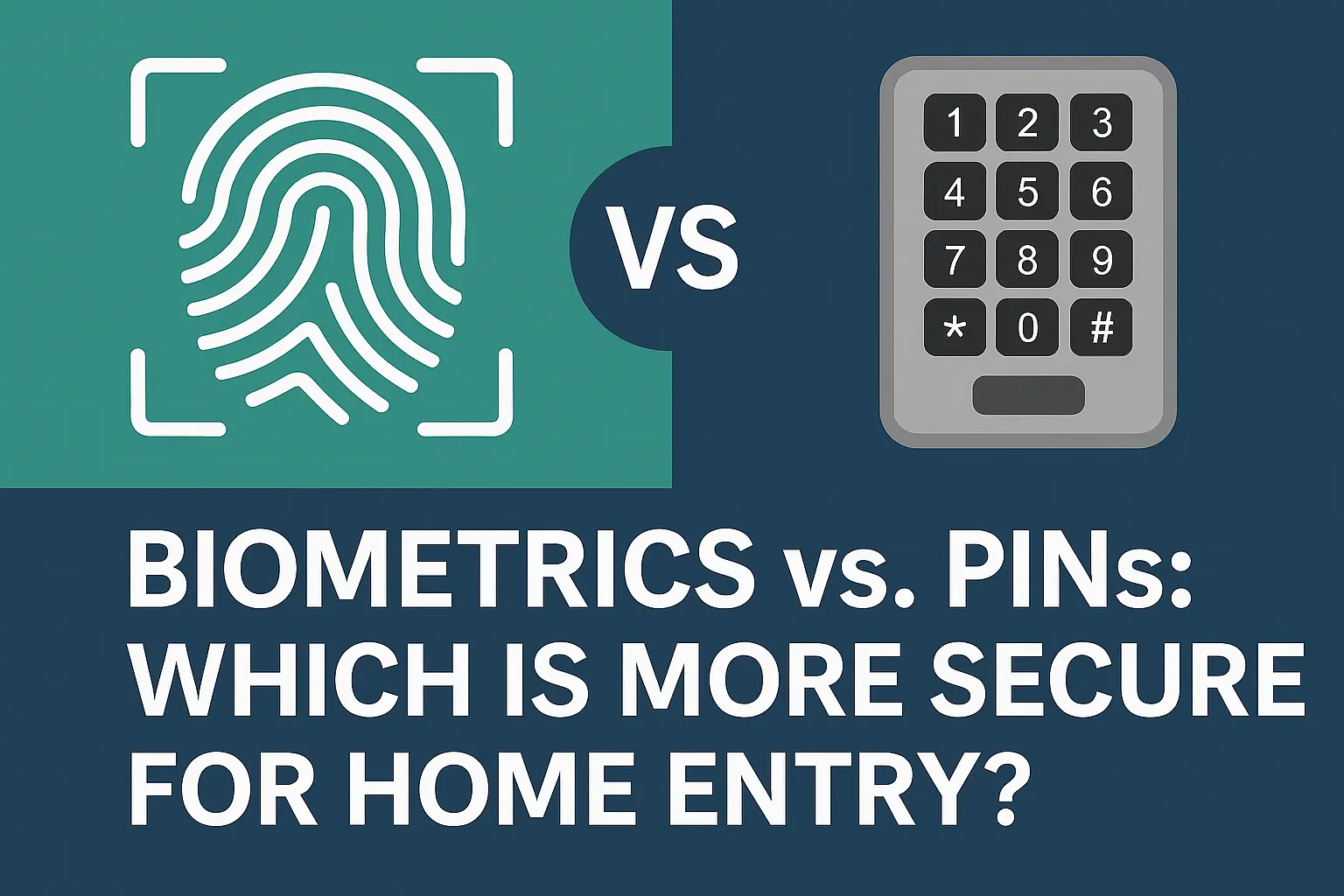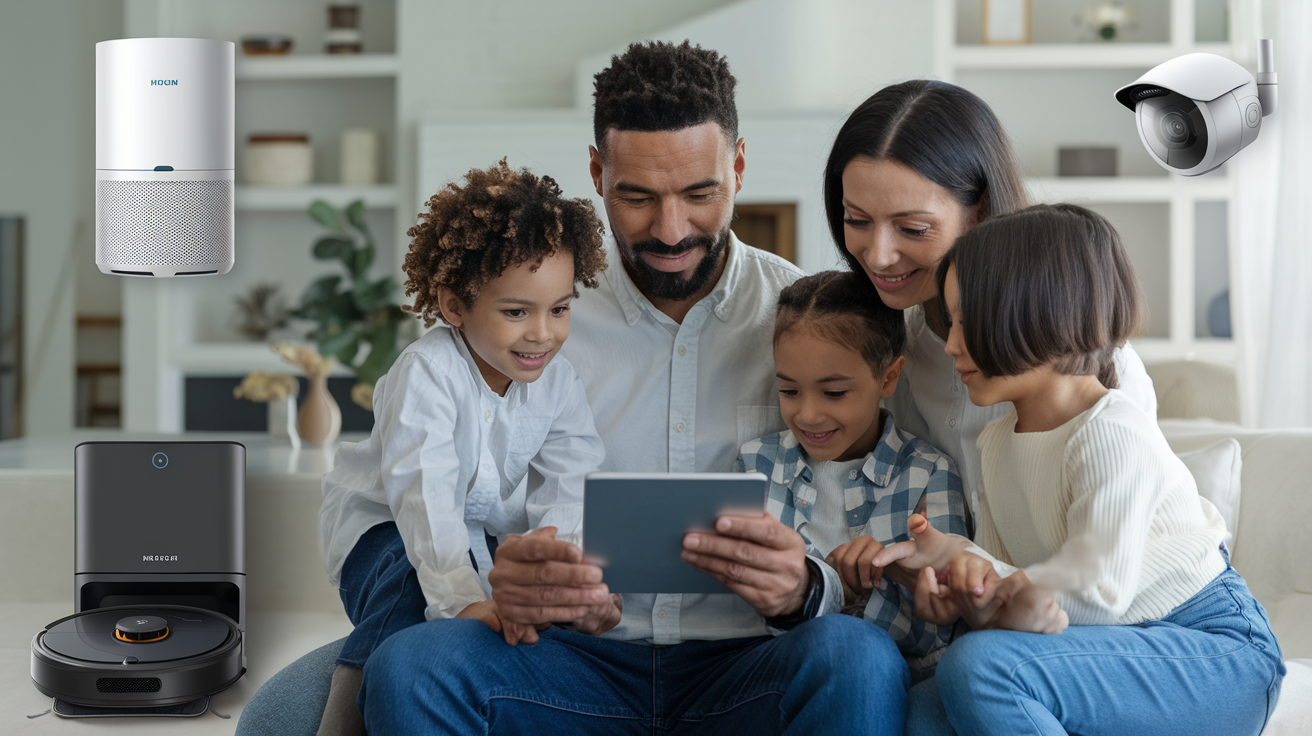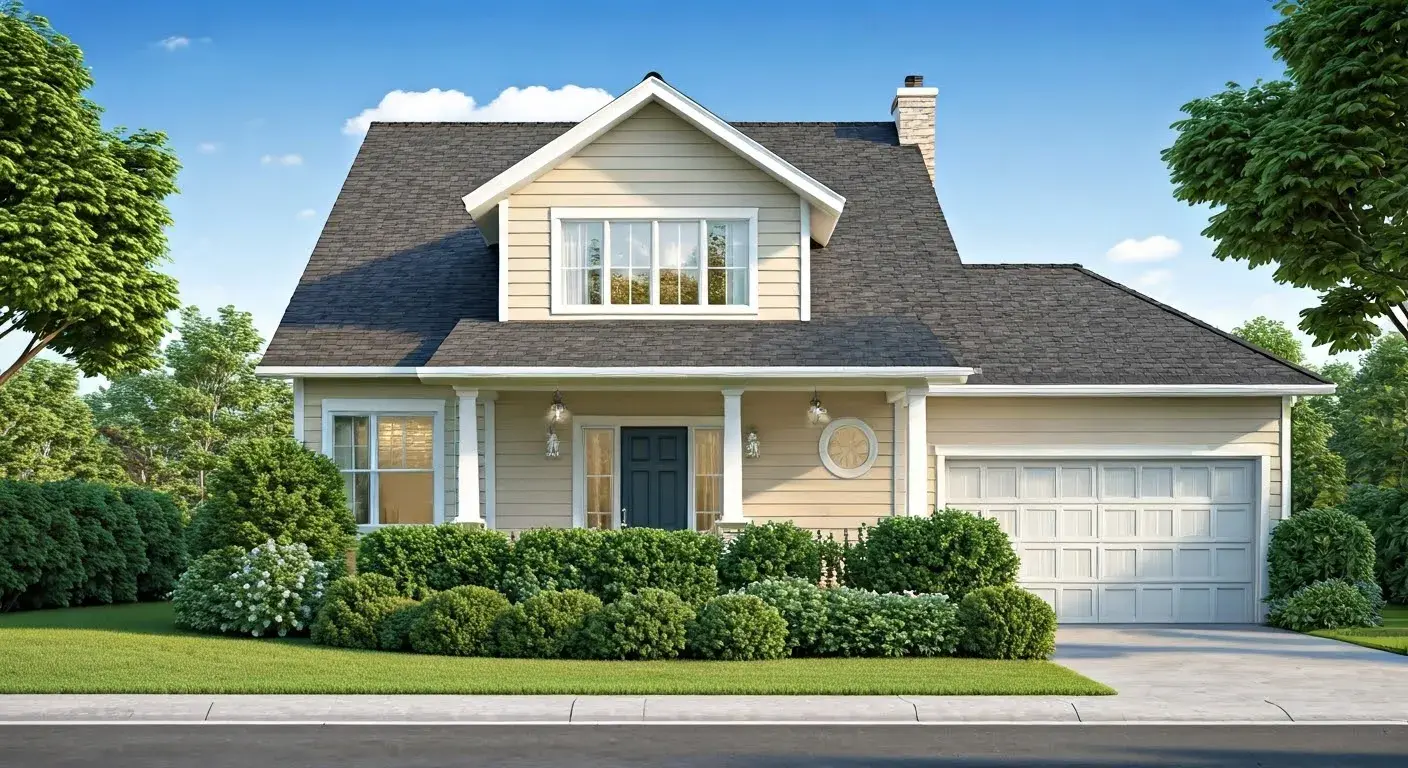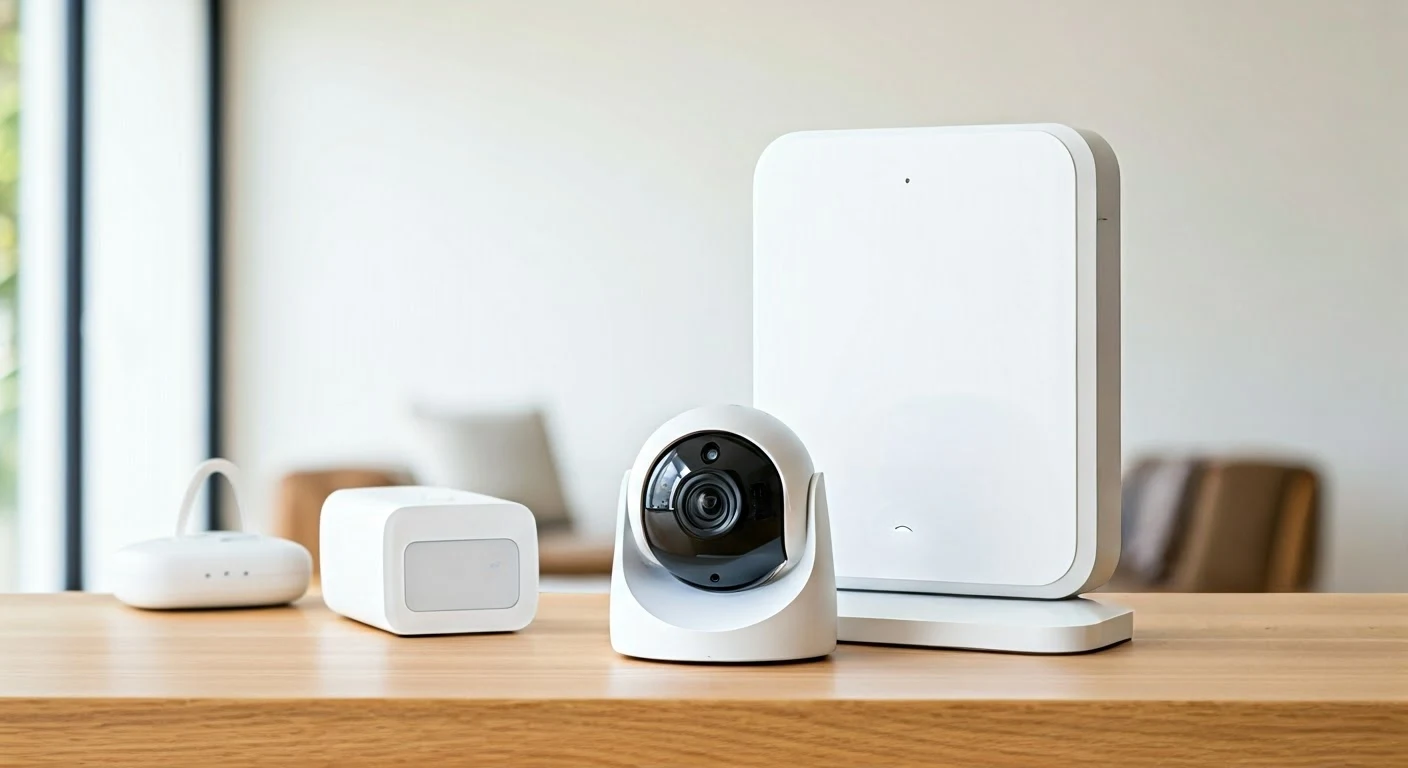In today's connected world, a smart home means more than just convenience. It also includes safety and security. Smart home video surveillance, including video recording capabilities, gives homeowners a high level of protection and peace of mind. With smart cameras and sensors, you can watch over your property from far away. This helps keep unwanted threats away and gives you important information about your home’s safety.
Understanding Smart Home Video Surveillance
Smart home video surveillance means using internet-connected cameras with a microSD card to watch your home from anywhere. Unlike regular security systems, smart cameras let you see live video, get motion alerts, and access everything through simple mobile apps.
These smart systems have helpful features like facial recognition and two-way audio. They provide a complete way to keep your home safe. Whether you are at work, on vacation, or away for just a bit, you can easily check on your belongings and family.
What Makes Smart Video Surveillance Different?
Smart video surveillance systems use AI and machine learning to improve home security. These smart technologies help cameras tell the difference between people, animals, and cars. This reduces false alarms and gives you more accurate alerts.
Many smart cameras also provide better video quality. You can choose high-definition or even 4K resolution. This means you can see and recognize people or things in the footage. It also helps make the recorded videos more useful as evidence.
In addition, a lot of smart video surveillance systems come with features like facial recognition, object tracking, and custom activity zones. These helpful skills let the system understand your habits and preferences. This makes your home security more personal and better suited to your needs.
Key Components of a Smart Home Video Surveillance Sy0stem
At the center of every smart home digital video surveillance system, there are security camera systems. These cameras are set up all around your property. You can choose between wired and wireless options. They record video footage and send it to a central hub or a cloud-based platform.
Wireless cameras are easy to install because they connect without any wires to the hub or router. Wired cameras give a stronger connection and you won’t need to change batteries.
For storing the video, you can use local storage on a hard drive in the hub. You can also go for cloud video storage where the footage is kept on remote servers. Cloud storage usually comes with a monthly fee, but it makes it easy to access your recordings from anywhere.
Choosing the Right Smart Home Cameras
Choosing the right smart home camera for each part of your property is important for good security, including considering the number of security cameras needed. Start by looking at what you need for safety and the setup of your home.
For example, places with a lot of people, like entryways and living rooms, may need cameras that can see a wide area, particularly near construction sites. On the other hand, quieter spots like backyards might need cameras with special features such as night vision or motion detection.
Indoor vs. Outdoor Cameras: Pros and Cons
Indoor cameras, such as the Nest Cam Indoor, are made for inside your home. They usually have features like motion detection, two-way audio, and night vision. These cameras are smaller and blend well with your home decor.
Pros of Indoor Cameras:
- Compact and discreet design
- Often cheaper than outdoor cameras
- Good for watching specific rooms or areas
Outdoor home security cameras are built to handle the weather. They are weatherproof, dustproof, and made with strong materials. They have similar features to indoor cameras but can have a wider view and better night vision.
Pros of Outdoor Cameras:
- Weatherproof and sturdy design
- Usually have wider fields of view
- Can discourage potential intruders
In the end, your choice between an indoor camera and an outdoor camera depends on where you want to place it and the security needs you have.
Features to Look for in Smart Home Cameras
When picking smart home cameras, there are a few important features to think about. These features will help you get the best performance and cover all your surveillance needs.
Motion detection is a basic feature. It starts recording and sends alerts when it detects movement. Some cameras can even tell if the movement is a person or a vehicle. This helps to reduce false alarms.
Battery life is very important if you use wireless cameras. You should choose cameras that last a long time on a single charge. You can also look for cameras that come with solar panel charging to make things easier.
Other Features to Consider:
- Night Vision: This lets cameras take clear videos in the dark. Color night vision can give you even more detail and accuracy.
- Two-Way Audio: This feature allows you to talk with someone through the camera. You can speak to them in real time.
- Field of View: A wider field of view means the camera can see more area. This reduces the need for having multiple cameras.
Installation Tips for Maximum Coverage
Proper installation is very important for getting full surveillance coverage. It also helps make your system work better. Start by placing cameras in busy areas and near entry points. This can help stop intruders.
Also, make sure your wireless cameras have a strong Wi-Fi signal. This will help avoid connection issues and keep your recordings running smoothly. You might want to use Ethernet cables for wired cameras to ensure a solid connection.
Strategic Placement of Cameras for Optimal Security
To start, think about the field of view of your cameras. Use cameras with wider fields of view in open spaces, like living rooms or backyards. This way, you can get a broad view of the area. In contrast, for tight spots like doorways or hallways, choose cameras with narrower fields of view for a clearer focus.
Place cameras carefully to cover key entry points. This includes front doors, back doors, windows, and garages. By monitoring these spots, you increase the chance of capturing video of any unauthorized entries.
Make sure to mount cameras at the right height and angle. This helps improve video quality and reduces blind spots. Also, do not position cameras directly in front of light sources, like windows or bright lights. Doing so can create glare and harm image quality.
DIY vs. Professional Installation: What to Consider
When deciding between installing your smart home video surveillance system yourself or hiring professionals, carefully weigh the pros and cons of each option.
DIY installation offers cost savings and flexibility. With user-friendly apps and simple setup processes, many modern systems make it relatively easy to install cameras and configure settings on your own.
However, if you have a large or complex property, opt for professional installation. Security experts can ensure optimal camera placement, and proper wiring, and seamlessly integrate the system with your existing home security system, providing enhanced peace of mind.
| Feature | DIY Installation | Professional Installation |
| Cost | Lower | Higher |
| Convenience | Can be done at your own pace | Requires scheduling and coordination |
| Expertise | Requires technical knowledge | Ensured proper installation and configuration |
| Support | Limited to manufacturer resources | Typically includes ongoing support and maintenance |
Integrating Video Surveillance with Your Smart Home Ecosystem
Make your smart home video surveillance system work better and be easier to use by connecting it to your current smart home setup. This gives you smooth control, automation, and better security.
For instance, if your system works with voice assistants like Google Home or Amazon Alexa, you can control your cameras using just your voice. You can tell your voice assistant to show the live feed from your front door camera or start recordings easily.
Compatibility with Other Smart Devices
When you choose smart security cameras, check if they work well with your current smart home devices. If they can connect with Google Home or Amazon Alexa, you can control your cameras, including video doorbells, and see live feeds just by using your voice. This makes it easier and lets you operate hands-free.
Additionally, connecting your video security system to your smart home network allows you to create useful automation and security setups. For example, you can set rules to turn on your cameras automatically when your smart home system is armed or when other sensors in your home detect motion.
This ability for your video security system to work with other smart devices builds a smart and connected security network. It can respond to different situations and offer better protection.
Using AI and Machine Learning for Enhanced Security
AI and machine learning improve the security of smart home video systems. They offer features that go beyond just motion detection. For example, smart AI can tell the difference between people, pets, and cars. This means you get more detailed alerts.
Another helpful feature is facial recognition. It can recognize people you know, giving an extra layer of safety and sending you personalized messages. Smart object tracking makes sure that moving items stay in the camera's field of view so that you catch important video footage.
With these advanced tools, your video footage becomes more than just recordings. They turn into active security tools that help you understand what’s happening and keep you safer.
Conclusion
In conclusion, using smart home video surveillance is important for protecting your home and those you care about. It’s essential to know the special features of these systems. Choosing the right cameras and planning where to place them is important to ensure the best security. By adding these systems to your smart home, you can make things easier and safer. Using AI and machine learning helps make your security even stronger. Stay updated, choose wisely, and keep safety as a priority in today’s online world. If you want help with setting up your smart home surveillance, don’t hesitate to ask for expert advice and support.
